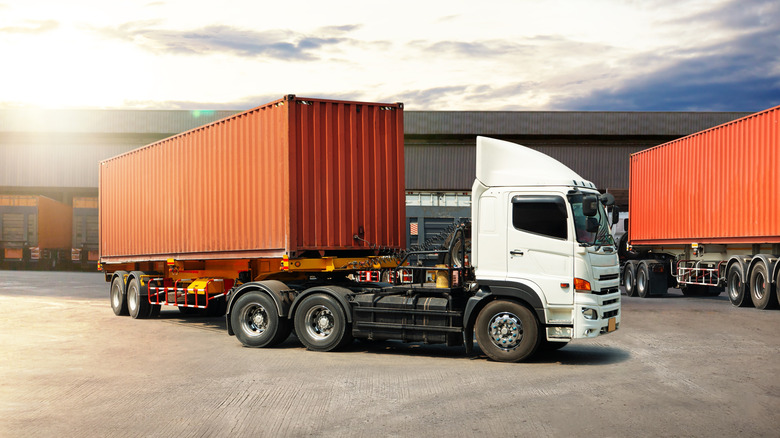Commercial Vs. Non-Commercial Vehicles: What's The Difference?
If you do a bit of reading into the laws surrounding the operation of motor vehicles, there's a particular term you'll see very often: commercial motor vehicles. What exactly is a commercial motor vehicle, though? A vehicle that plays commercials? Well, theoretically, a large truck with screens playing commercials could be a commercial motor vehicle, but that's not the intended meaning.
The "commercial" designation is used to refer to large vehicles operating on a highway strictly for business and commerce purposes. These vehicles are subject to certain laws and restrictions, due both to the fact that they represent businesses in their operation and because they're really big and heavy. These restrictions include the requirement of special operating licenses and weight limits. These factors and more separate a commercial motor vehicle from a non-commercial vehicle, which you should already be familiar with because you probably drive one yourself. If you're planning on driving larger vehicles for business purposes, it would be to your benefit to know the precise differences.
Commercial vehicles are intended only for heavy-duty passenger or cargo transport
The "commercial" in commercial motor vehicles, or "CMVs" for short, refers to the fact that the vehicle is being used for some manner of business or commerce. For example, a big-rig truck being used to haul large quantities of dry food to a supermarket would be considered a commercial vehicle. Alternatively, a large bus being used to transport passengers would also be a commercial vehicle, as the passengers are paying to ride on it.
The United States Federal Motor Carrier Safety Administration maintains a set of particular rules that differentiate a commercial vehicle from a non-commercial vehicle. First, the overall weight of the whole vehicle, also known as the gross vehicle weight rating (GVWR) must add up to 10,001 pounds or more. If the vehicle is made up of multiple segmented cabs or components, then the GVWR requirement increases to 26,001 pounds. For passenger vehicles, the vehicle must be large enough to haul at least 8 paying passengers, including the driver. If the passengers aren't paying to be transported, the requirement increases to 15 passengers. Finally, any vehicle that is hauling some form of hazardous material that requires a displayed warning on the body is automatically considered a commercial vehicle.
Different kinds of commercial vehicles also require different kinds of commercial driver's licenses to operate. In the state of Florida, for instance, a Class C license is required for passenger vehicles and hazardous materials, a Class B license is required for a 26,001-pound vehicle hauling cargo of 10,000 pounds or less, and a Class A license is required for anything heavier than that. It's all part of the vital paperwork every truck driver must have on hand.
Non-commercial vehicles are individual vehicles for private usage
So, if a commercial vehicle is a large vehicle used strictly for business purposes, then what's a non-commercial vehicle? In the simplest terms, a non-commercial vehicle is any vehicle that doesn't meet the requirements to be a commercial vehicle. If you own a regular passenger car that you drive to work every day, congratulations, you're the proud owner of a non-commercial vehicle. Any individual vehicle that weighs less than the CMV requirement of 10,001 pounds is considered a non-commercial vehicle by default. Even if you're driving a hefty, diesel-fueled pickup truck with a trailer attached to it, if it weighs less than 10,001 pounds, it's still a non-commercial vehicle.
Like CMVs, non-commercial vehicles also have several categories of required license. The standard driver's license for a non-commercial vehicle is a Class D license, which is good for operating any ordinary car. Depending on where you live, there also may be special licenses for vehicles that are larger than typical non-commercial vehicles, but still not quite big enough to be CMVs. For example, in the state of California, a Non-CDL Class C is needed to operate a van or RV less than 40 feet in length carrying 15 or fewer people.


